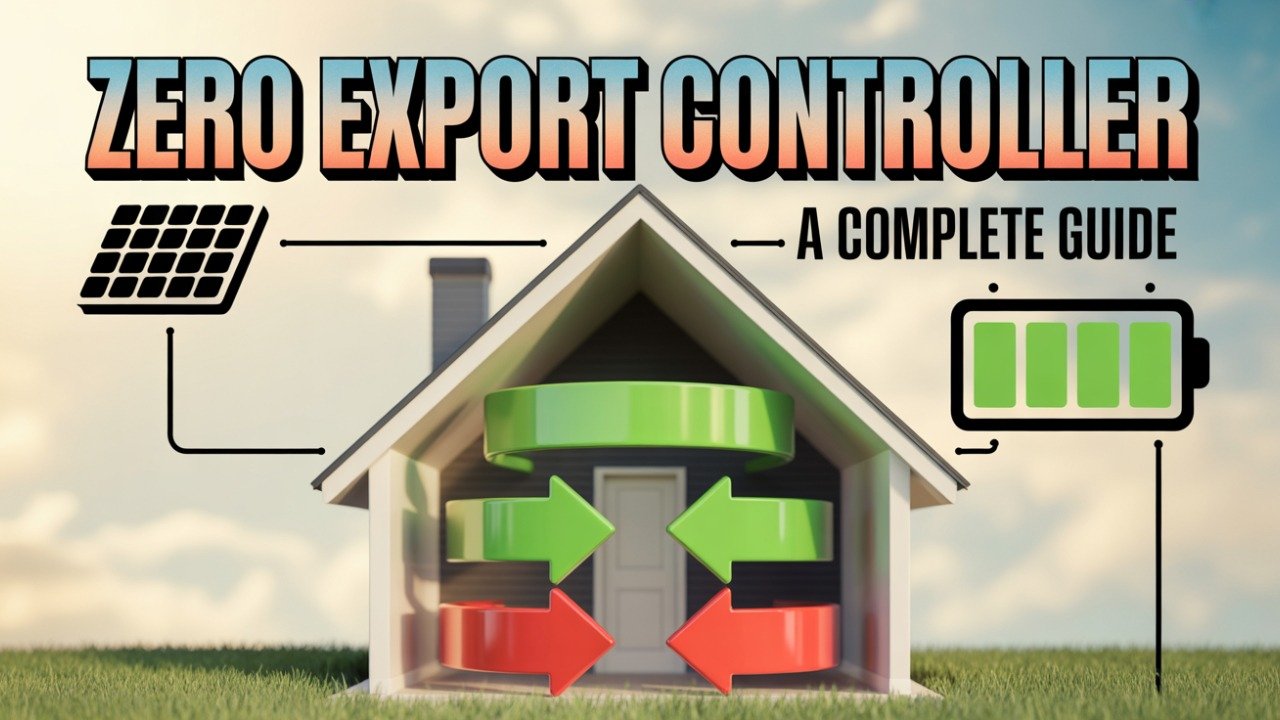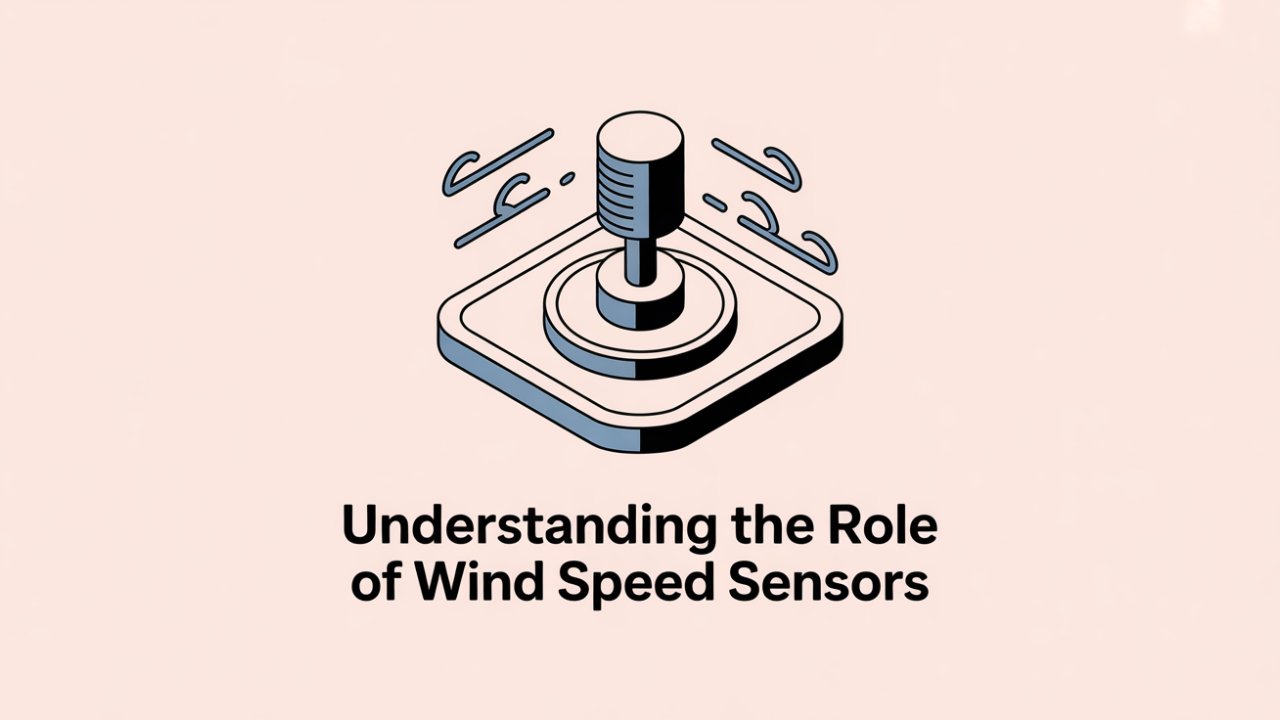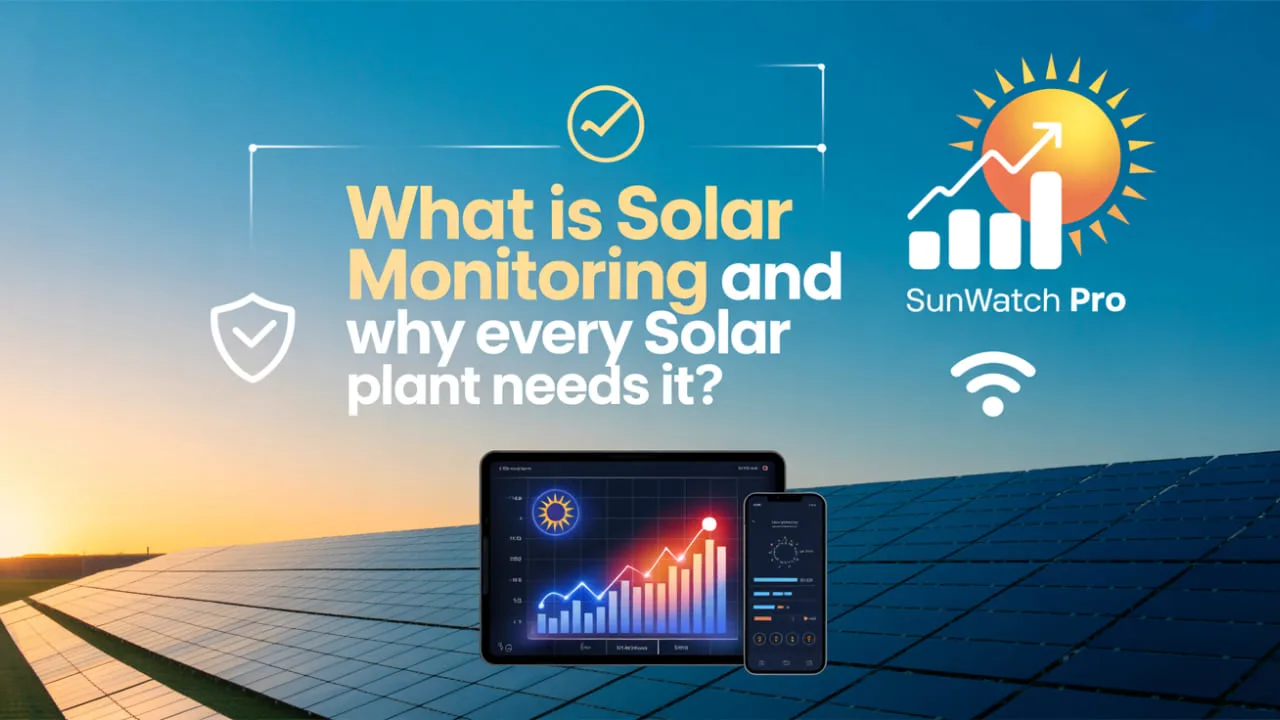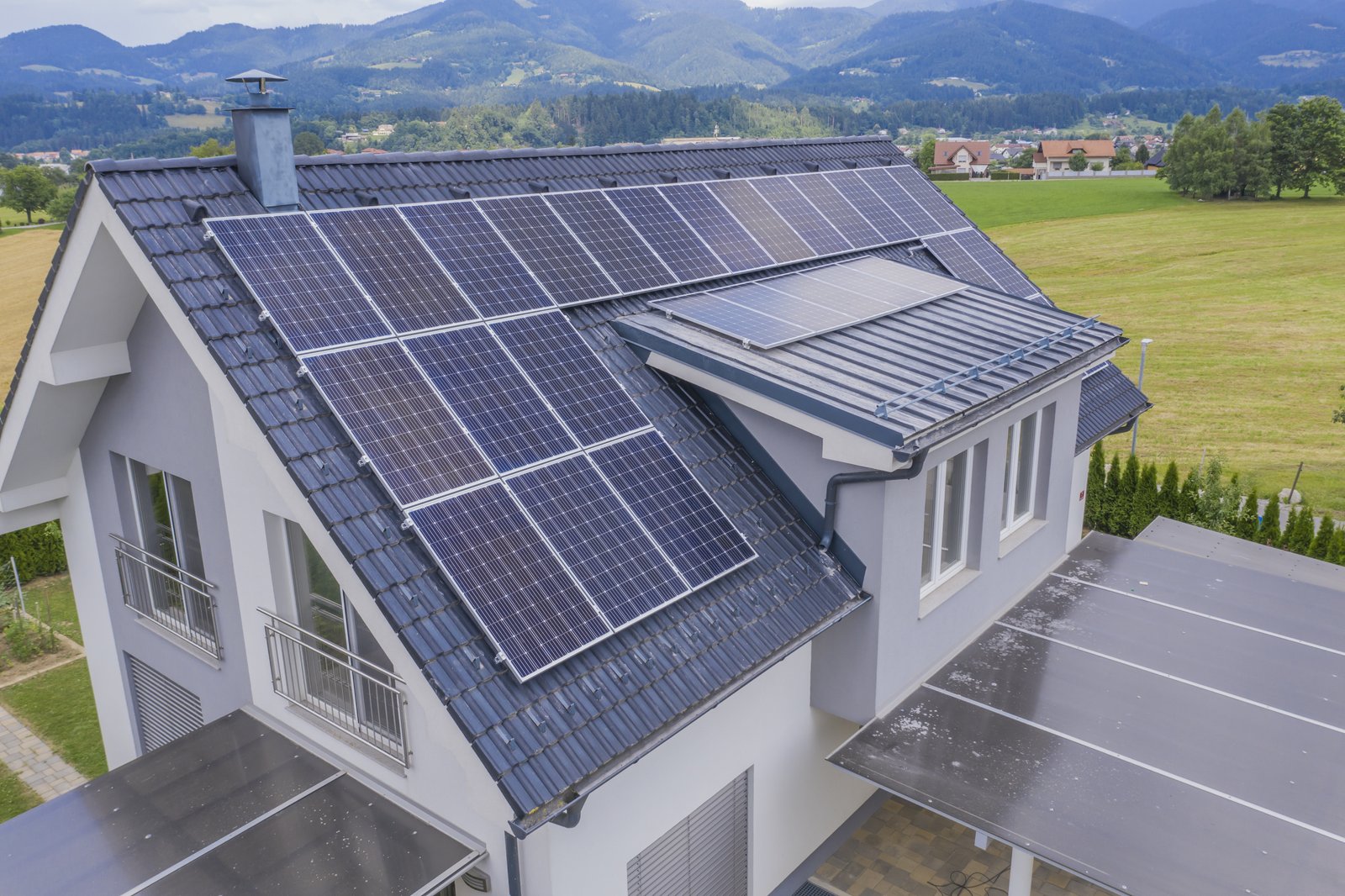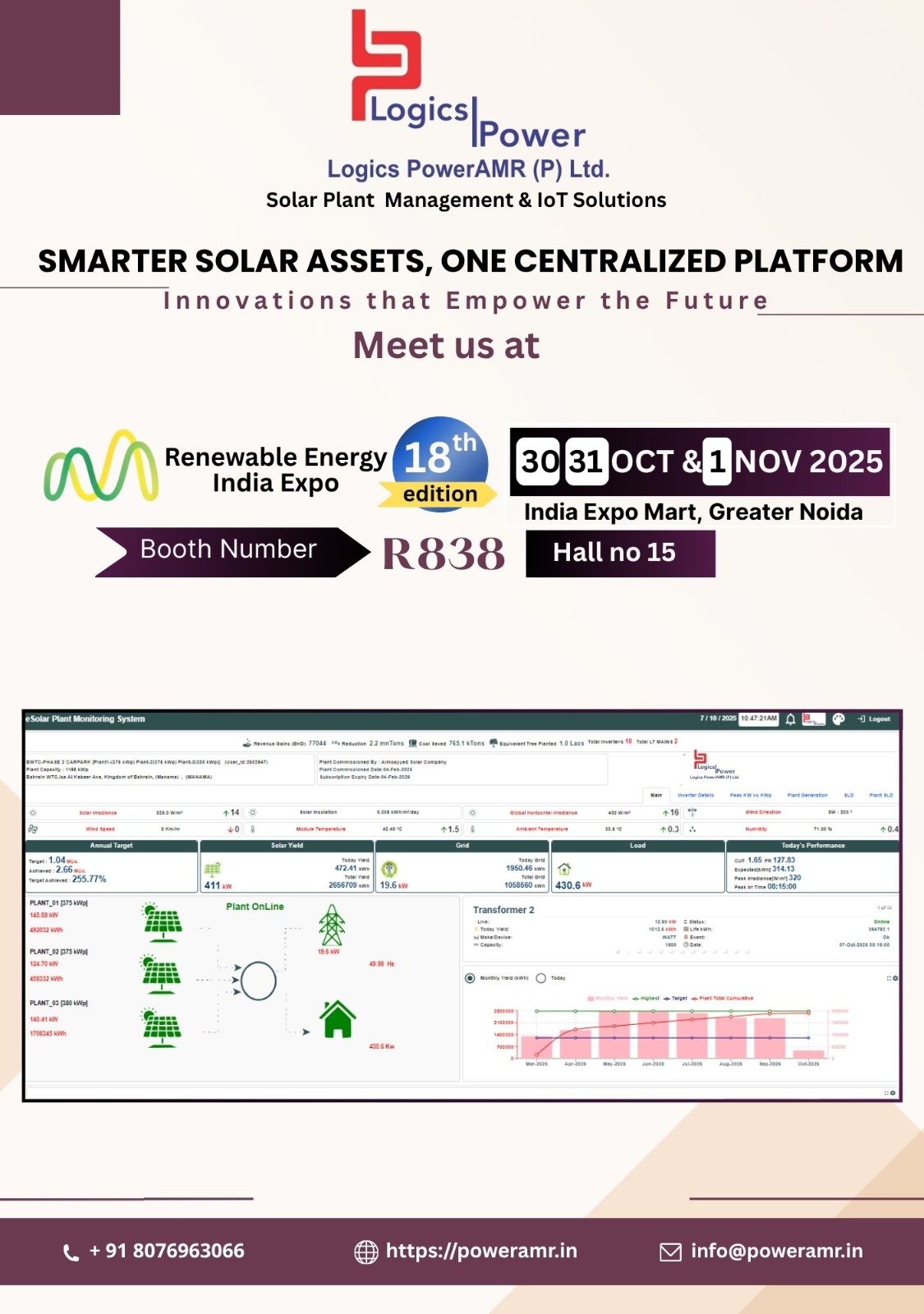14/10/2025
Blogs
Why Accurate Wind Speed Sensors Are Critical for Solar Plants and Safety
Why Accurate Wind Speed Sensors Are Critical for Solar Plants and Safety
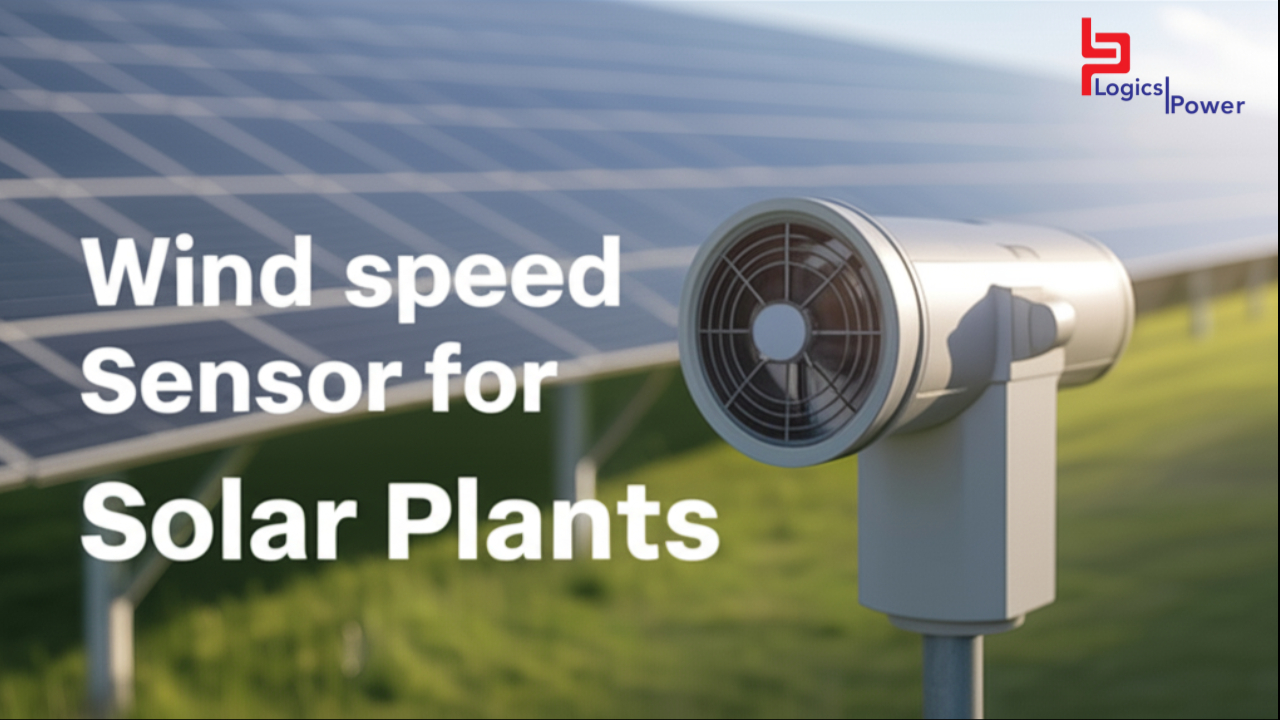
When it comes to wind and solar energy systems, accurate wind speed measurement is truly essential. Wind affects power output, equipment safely along with system performance. Energy forecasting and safety decisions can go wrong if you don’t have reliable data, and it can lead to major losses. That’s where a wind speed sensor plays a key role. In this blog, we’ll explore why precise wind monitoring is crucial for solar as well as wind plants, how these sensors work, and how to choose the right one.
What Is a Wind Speed Sensor?
A wind speed sensor, also known as an anemometer, is a device used to measure the speed of the wind. It works by capturing the wind movement through rotating cups, vanes, or sometimes ultrasonic pulses, depending on the types.
These sensors collect real-time data points like wind speed, direction, along with gust intensity, which are then sent to monitoring systems. Proper replacement is key; wind sensors are usually installed on towers or poles at a height where wind flows freely without any obstructions. Ultimately, this ensures accurate and consistent readings and helps solar and wind power systems operate safely, efficiently, and with reliable energy output forecasting.
Why Accuracy Matters in Wind Farms?
Energy Output Forecasts
Accurate wind speed sensors plays a key role in predicting energy generation. This is because reliable data actually allows operators to plan power output, manage grid supply, and meet energy demands efficiently. Poor forecasting sue to inaccurate can lead to energy imbalance and revenue loss.
Blade Wear & Tear Prevention
Wind turbine blades are sensitive to stress from varying wind speeds. When sensors provide precise readings, turbines adjust performance in order to reduce strain. Inaccurate data may cause over-speed operation, and this results in faster blade erosion, increased maintenance needs, while reducing the overall lifespan of crucial components.
Turbine Shutdown in High-Speed Conditions
Modern turbines are programmed in order to stop during extreme wind speeds to avoid damage. High-accuracy wind sensors ensure this occurs at the right moment. If the sensor fails or even indicates incorrect data, turbines may shut down late or sometimes early, risking equipment damage or power loss.
Industry Use Cases
-
Utility-Scale Turbines
In large wind farms, accurate wind speed sensors help monitor performance, schedule maintenance, and ensure safety. These sensors actually support real-time data analysis, enabling energy companies in order maximize output and avoid costly breakdowns across multiple turbines spread over wide areas.
-
Micro Wind Systems
Small-scale and even rely on wind speed sensors in order to operate efficiently. Accurate readings help adjust turbine settings for optimal power generation, especially in areas with fluctuating wind. They also prevent overloading, or even underperformance, in compact systems.
-
Offshore Platforms
When it comes to offshore wind farms, they face harsh weather and high wind speeds. Rugged and precise wind sensors are actually crucial for safe operation, performance monitoring along with timely shutdowns. In remote marine locations, sensor reliability is essential in order to protect expensive infrastructure from storm-related damage.
How to Choose a Reliable Wind Sensor?
Choosing a reliable wind speed sensor is really crucial for accurate energy monitoring, system safety, as well as long-term performance in both wind and solar power setups:
-
High Sensitivity
A top-quality wind speed sensor must give high sensitivity in order to detect even minor changes in wind velocity. This actually ensures accurate performance in a wide range of conditions, from light breezes to strong gusts. In energy systems, especially wind farms, early detection of changing wind patterns helps optimize turbine adjustments, avoid system lag, and maintain consistent power generation, leading to better efficiency and improved long-term performance.
-
Accurate Calibration
Proper calibration ensures that wind speed readings remain reliable over time. A well-calibrated sensor reduces errors in energy output predictions along with system response. Always look for sensors that are pre-calibrated at the factory and allow for field calibration whenever required. Regular calibration also minimizes performance drift and helps operators maintain precise data logs for analysis, compliance, along with operational safety in both large-scale and small-scale wind energy projects.
-
Weatherproof Durability
Wind sensors are often exposed in order to harsh and unpredictable weather, especially on offshore platforms, or even in remote open fields. When you choose a sensor built with durable materials along with sealed enclosures helps it withstand rain, heat, cold, dust, as well as salt spray. A weatherproof design ensures continuous and accurate operation without frequent maintenance, making it a perfect deal for long-term, outdoor employment in challenging environments.
-
Easy Integration and Maintenance
A reliable wind sensor should be easy to install, integrate, and maintain. Look for sensors that truly support industry-standard data protocols like Modbus or RS-485 for seamless connection in order to monitor systems. Compact design, clear wiring diagrams, along with accessible service options ,simplify setup. Low maintenance requirements also reduce downtime, and make these sensors suitable for solar and wind plants that actually demand consistent performance with minimal intervention.
Logics PowerAMR’s Wind Sensor Features
PowerAMR’s wind speed sensors are designed in order to deliver high accuracy, fast response, and long-term durability. Equipped with advanced sensing technology, they provide real-time data accurately on wind speed and gusts with minimal error margins. These sensors feature wide operating temperature ranges, UV-resistant housing, along with IP65-rated waterproofing and makes them suitable for extreme environments.
PowerAMR's sensors support industry-standard protocols like Modbus RTU and RS-485, and allow seamless integration with SCADA systems, data loggers, and monitoring platforms. No matter if it’s installed in utility-scale win farms, micro wind setups, or even offshore renewable energy projects, sensors truly ensure precise monitoring and system safety, helping optimize performance and reduce maintenance needs.
Conclusion
Accurate wind speed monitoring is crucial for the safety, efficiency along with long-term performance of wind and solar energy systems. From forecasting power outputs to protecting turbines from high-speed wind damage, reliable sensors truly play a crucial role. Choosing the right wind speed sensor, like those offered by Logics PowerAMR, ensures consistent data, seamless integration, and minimal maintenance.
Improve your wind energy system accuracy, contact us today to learn more about our advanced wind speed sensor solutions.
10/10/2025
03/10/2025
08/09/2025
18/08/2025


